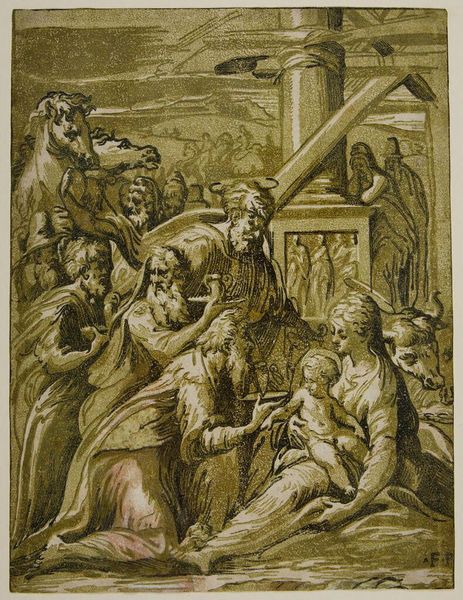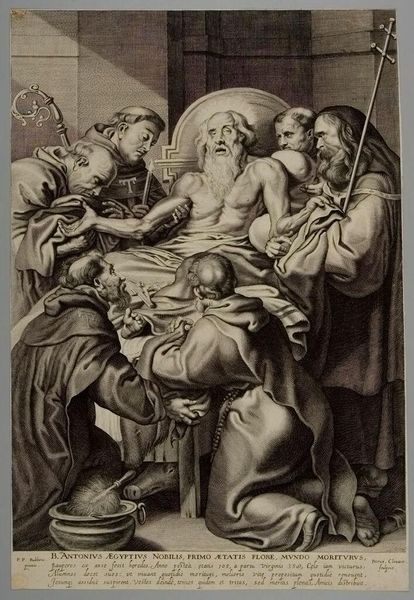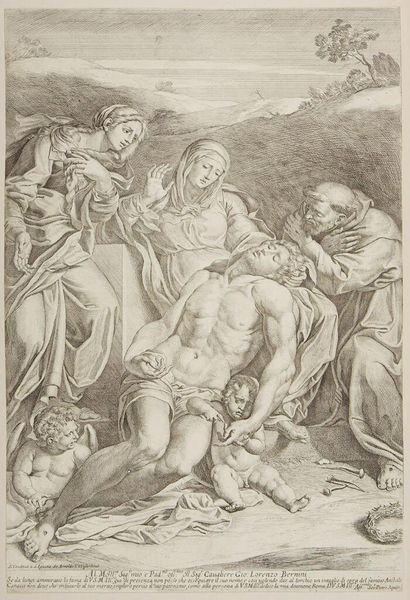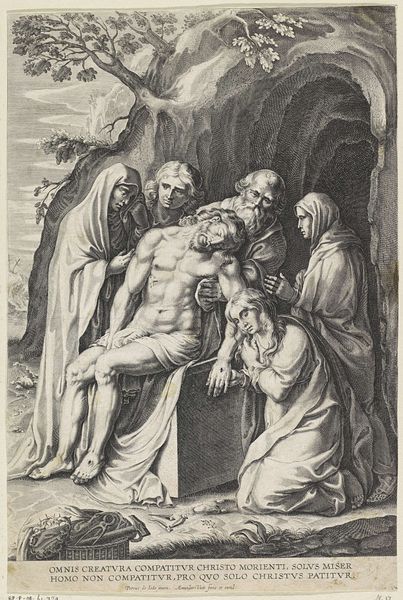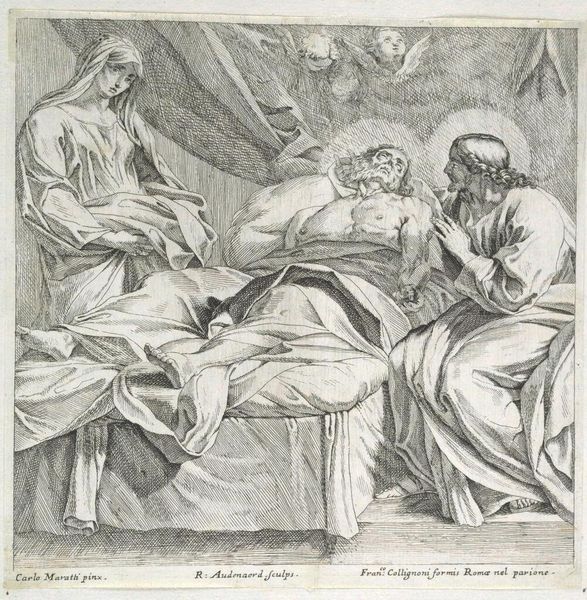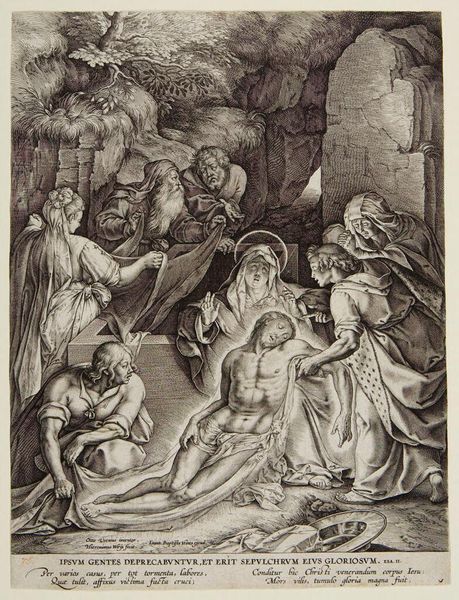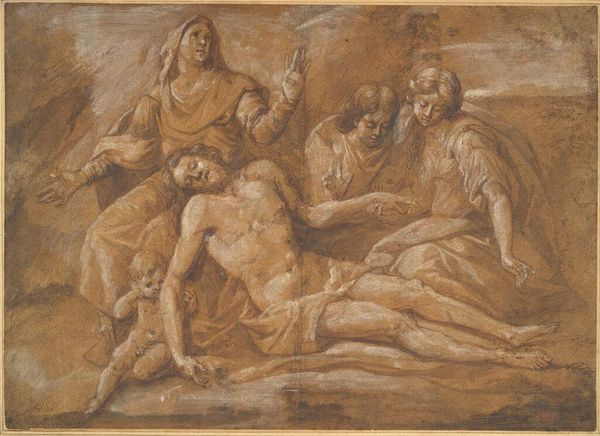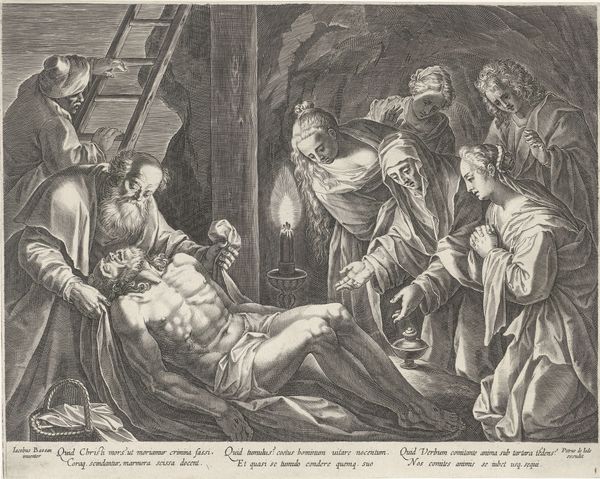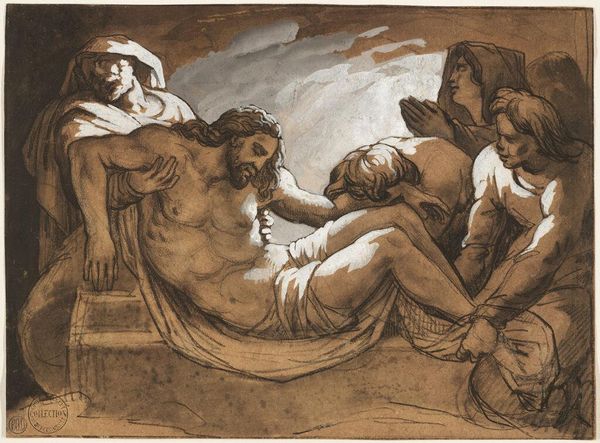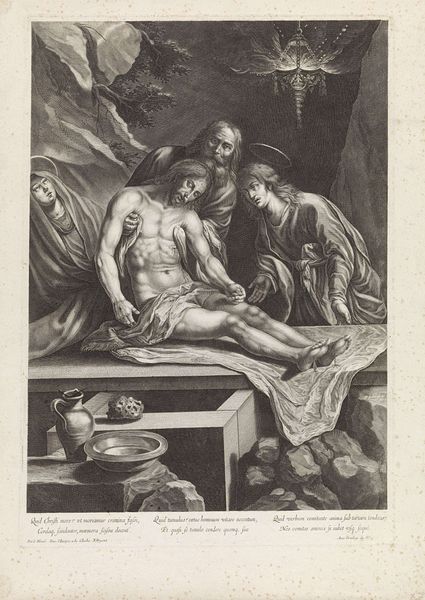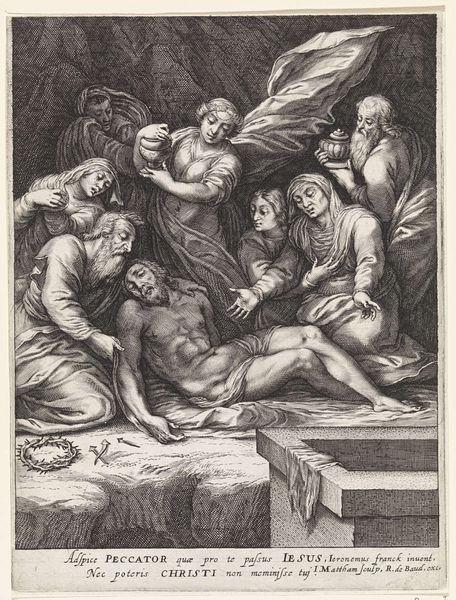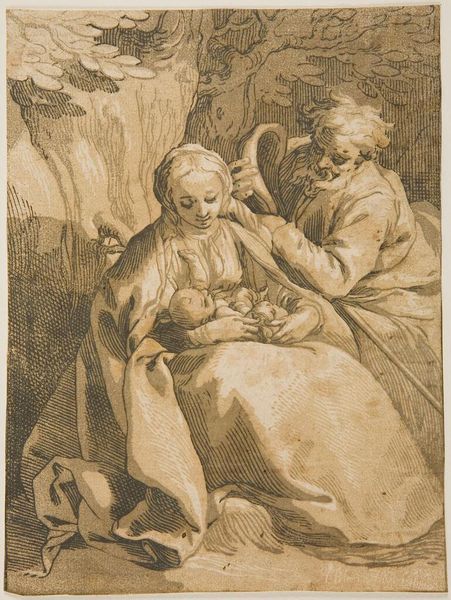
drawing, print, paper, ink, engraving
#
drawing
# print
#
figuration
#
paper
#
11_renaissance
#
ink
#
history-painting
#
engraving
Dimensions: 418 × 323 mm
Copyright: Public Domain
Curator: I find the muted tones surprisingly impactful; there's an understated somber quality that amplifies the subject matter. Editor: Indeed. This is Andrea Andreani's "The Entombment," a chiaroscuro woodcut made in 1585. It depicts the aftermath of Christ's crucifixion, his body being prepared for burial. Think about the weight of history, the legacies of trauma carried in this moment. Curator: The composition immediately struck me. Note the carefully orchestrated balance between light and shadow and how the diagonal lines create movement, almost pulling the viewer into the scene of grief. Semiotically, one might see the figures as representative of despair, their forms drooping under the burden. Editor: Absolutely, and what's critical here is understanding who bears the weight of grief historically. Look at the women in the composition, cradling and attending to Christ's body. They are not merely passive mourners, but active participants. This image operates within a broader context of the period that positions women centrally in this act. Curator: Yes, and how does this work manipulate line and form to communicate emotion, despite a nearly monochrome palette? The way the light catches Christ's torso, it's a marvel. We are guided back again to the central figure of Christ as a function of compositional execution. Editor: But what does that singular focus on Christ obscure? The focus shouldn’t be taken exclusively as artistic—we can read this choice, historically and politically, in the service of patriarchal narratives. Christ, in art like this, is given centre stage, erasing in many ways, other narratives about community, power and the role of mourning in shaping the discourse. Curator: That's a fascinating perspective, and perhaps a conscious choice on Andreani's part, considering the period, to emphasize the divine nature of the central figure. Still, let us not forget his mastery of the medium, particularly the manipulation of line and tonality. Editor: Agreed, the technique is compelling, yet its content cannot be viewed as neutral. Renaissance depictions such as these served specific socio-political purposes, reflecting and perpetuating hierarchies. Considering this context allows for a richer and more critically conscious viewing experience. Curator: Ultimately, the success of Andreani's print lies in the emotional resonance created by its visual structure. Editor: While the power dynamics inform and shape even the aesthetic choices made centuries ago. Thank you for letting us reflect critically on a historical interpretation.
Comments
No comments
Be the first to comment and join the conversation on the ultimate creative platform.
